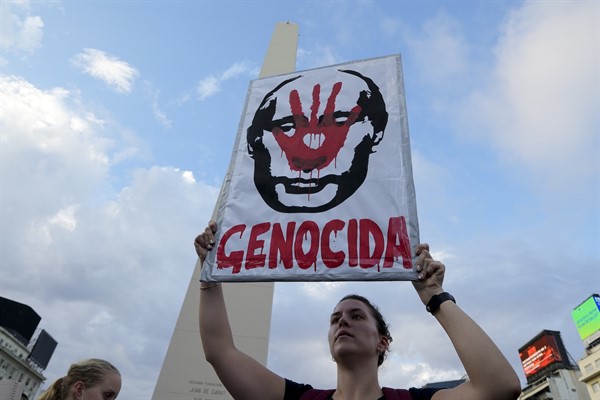Lately, elections in Latin America are making people squirm in Washington. For foreign policy old-timers, victories by leftist candidates have conjured images of Cuba’s Fidel Castro and Che Guevara. Others are haunted by memories of more recent bogeymen, such as Venezuela’s Hugo Chavez and Bolivia’s Evo Morales. Russia’s invasion of Ukraine deepened these anxieties, fueling fears that the region’s ideological pendulum is swinging in President Vladimir Putin’s direction.
But more than a month into the war, those fears have proven to be unfounded. Indeed, if anything, Latin America’s response to Putin’s brutality reinforced shared hemispheric values with the United States, suggesting that the United States still has ample diplomatic opportunities in this region.
Undeniably, Latin America’s leftists are on a roll. In 2018, Andres Manuel Lopez Obrador easily won Mexico’s presidency. The next year, Alberto Fernandez recaptured Argentina’s presidential palace for the Peronist Party. In 2020, Morales’ long-time minister of the economy, Luis Arce, replaced a hardline conservative as Bolivia’s leader. And last year, Peruvians chose a rural union activist, Pedro Castillo, as their new president; Chileans opted for Gabriel Boric, a former student protest leader whose coalition includes the Communist Party, over a far-right populist; and Hondurans voted in Xiomara Castro as the country’s first leftist leader since her husband’s overthrow in a coup d’état more than a decade ago.

